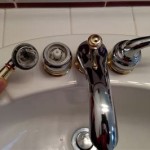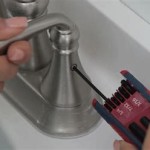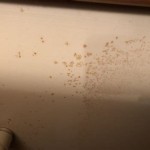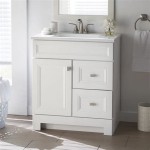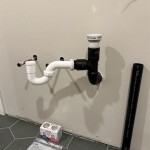How to Replace a Broan Bathroom Exhaust Fan
A bathroom exhaust fan is a vital component in maintaining a healthy and comfortable bathroom environment. It effectively removes moisture, preventing mold and mildew growth, and helps to eliminate odors. Over time, these fans can become noisy, inefficient, or even fail completely. Replacing a Broan bathroom exhaust fan, a common brand found in many homes, is a manageable DIY project for individuals with basic electrical and mechanical skills. This article provides a comprehensive guide to replacing a Broan bathroom exhaust fan, outlining the necessary tools, safety precautions, and step-by-step instructions to ensure a successful outcome.
Before commencing the replacement process, it is crucial to understand the different types of Broan bathroom exhaust fans. These generally fall into two categories: fan-only units and fan/light combination units. The replacement procedure will be slightly different depending on the type of unit. Determining the existing model of the fan is also important. This information is typically found on a label inside the fan housing. Knowing the model number allows for the selection of a compatible replacement fan, ensuring proper fit and function.
Essential Tools and Materials
Successfully replacing a Broan bathroom exhaust fan requires the following tools and materials:
*New Broan Bathroom Exhaust Fan: Select a replacement fan that matches the size and specifications of the existing unit. Pay attention to CFM (cubic feet per minute) rating, which indicates the fan's airflow capacity. A higher CFM rating is suitable for larger bathrooms.
*Screwdriver Set: A set of screwdrivers, including both Phillips head and flathead options, is essential for removing and installing screws of various sizes.
*Wire Strippers/Crimpers: These tools are necessary for safely disconnecting and reconnecting electrical wires. Wire strippers remove insulation without damaging the wire, while crimpers are used to secure wire connectors.
*Wire Connectors (Wire Nuts): These connectors are used to safely join wires together, ensuring a secure electrical connection. Select wire connectors that are appropriately sized for the wire gauge.
*Pliers: Pliers are useful for gripping and manipulating wires, screws, and other small components.
*Utility Knife: A utility knife may be needed to score around the existing fan housing to loosen any paint or caulk.
*Ladder or Step Stool: A sturdy ladder or step stool is necessary to safely access the fan housing in the ceiling.
*Safety Glasses: Safety glasses are essential to protect eyes from debris that may fall during the removal and installation process.
*Gloves: Work gloves provide a better grip and protect hands from sharp edges and potential electrical hazards.
*Voltage Tester: A non-contact voltage tester is crucial for verifying that the power to the circuit is completely turned off before working on the electrical wiring.
*Dust Mask: A dust mask can help protect against inhaling dust and particles that may be present in the ceiling.
*Measuring Tape: Measuring tape is to ensure the new unit is the correct size.
Safety Precautions
Prioritizing safety is paramount when working with electrical wiring. Before commencing any work, adhere to the following safety precautions:
*Turn Off the Power: Locate the circuit breaker that controls the bathroom exhaust fan and switch it to the "OFF" position. This is the most critical step in preventing electrical shock.
*Verify Power is Off: Use a non-contact voltage tester to confirm that the power to the fan is completely turned off. Touch the tester to the wires and connections inside the fan housing. If the tester indicates the presence of voltage, recheck the circuit breaker and ensure it is properly switched off.
*Wear Safety Glasses and Gloves: Protect eyes and hands from debris and electrical hazards.
*Work in a Well-Lit Area: Ensure that the work area is adequately illuminated to prevent accidents.
*Follow Manufacturer's Instructions: Carefully read and follow the manufacturer's instructions for the new fan. These instructions provide specific guidance on installation and wiring.
*If Unsure, Consult a Professional: If there is any doubt or uncertainty about any aspect of the replacement process, it is always best to consult a qualified electrician.
Step-by-Step Replacement Procedure
Once the necessary tools and materials are gathered and safety precautions are understood, the following steps outline the replacement procedure:
Remove the Existing Fan Cover: The fan cover is typically held in place by spring clips or screws. Gently squeeze the spring clips or unscrew the screws to release the cover. Carefully lower the cover and set it aside.
Disconnect the Electrical Wiring: Locate the electrical junction box inside the fan housing. Use wire strippers to disconnect the wires. Typically, there will be three wires: black (hot), white (neutral), and green or bare copper (ground). Use the voltage tester to ensure there is no power before disconnecting the wires. Unscrew the wire connectors (wire nuts) and carefully separate the wires. If the wiring appears damaged or brittle, it may be necessary to replace the wiring back to the switch.
Remove the Old Fan Housing: The fan housing is usually attached to the ceiling joists with screws or mounting brackets. Remove the screws or detach the brackets to release the housing. If the housing is caulked to the ceiling, use a utility knife to score around the edges to loosen it.
Install the New Fan Housing: Position the new fan housing in the opening. Secure it to the ceiling joists using the screws or mounting brackets provided with the new fan. Ensure that the housing is level and securely attached. Some new fans are smaller than the old ones. Consider installing a larger trim, or replacing the drywall.
Connect the Electrical Wiring: Refer to the wiring diagram provided with the new fan. Connect the wires using the wire connectors (wire nuts). Match the wire colors: black to black, white to white, and green or bare copper to green or bare copper. Ensure that the wire connections are secure and that no bare wire is exposed. Tuck the wires neatly back into the electrical junction box. Check the voltage again after reconnecting the wires.
Install the New Fan Cover: Attach the new fan cover to the fan housing. Ensure that it is properly secured and aligned.
Restore Power: Go to the circuit breaker panel and switch the circuit breaker back to the "ON" position.
Test the New Fan: Turn on the bathroom light switch to activate the fan. Verify that the fan operates smoothly and quietly.
Specific Broan models may incorporate slight variations in the installation process. Always consult the manufacturer's instructions for the model being installed. Failure to follow these instructions could result in improper installation and potential safety hazards.
Troubleshooting Common Issues
Even with careful planning and execution, some issues may arise during the replacement process. Here are some common problems and possible solutions:
*New Fan Does Not Work: Double-check the circuit breaker to ensure that it is switched on. Verify that the wiring connections are secure and that the wires are properly connected. Use a voltage tester to confirm that power is reaching the fan.
*Fan is Noisy: Ensure that the fan housing is securely attached to the ceiling joists. Check for any obstructions that may be interfering with the fan blades. Some fans are simply louder than others.
*Fan is Not Removing Moisture Effectively: Verify that the fan is properly sized for the bathroom. Ensure that the exhaust duct is not blocked or restricted. If there is a long run of duct work, consider using a fan with a higher CFM rating.
*Fan Cover Does Not Fit: Ensure that the new fan cover is compatible with the new fan housing. If the cover is slightly too large or too small, it may be necessary to adjust the mounting clips or screws.
*Difficulty Removing Old Fan Housing: The old housing may be stuck due to paint or caulk. Use a utility knife to carefully score around the edges to loosen it.
When dealing with electrical issues, it is imperative to exercise extreme caution. If troubleshooting steps do not resolve the problem, or if there is any doubt or uncertainty, contacting a qualified electrician is the safest course of action. Attempting to repair electrical problems without proper knowledge and experience can lead to serious injury or property damage.

How To Clean Replace Light Broan Model 678 Exhaust Fan

Replace A Bathroom Fan Broan

Remove Install A Bathroom Fan Grille In 1 Min

How To Replace Broan 670 671 And 688 Bathroom Fan Assembly

How To Replace A Bathroom Ceiling Fan Broan 671 Easy And Simple Tutorial

How To Replace Broan Qtx110hl Bathroom Fan Heating Element

Broan Nutone Easy Install Bathroom Ventilation Fan Replacement Grille In White Fgr101s The Home Depot

Bkr60 By Broan Nutone Quickit Bath Fan Replacement Motor And Cover Grille 60 Cfm Bitter Neumann

Bkr60 Broan Nutone Quickit Bath Fan Replacement Motor And Cover Grille 60 Cfm Abw Appliances

Broan Nutone 0 Cfm Sones Bathroom Exhaust Fan Grille Update Com
Related Posts
